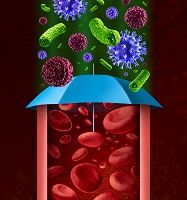Article
Bacteria Passenger Identified, New Antibiotics Could Be Next
Author(s):
New antibiotics may be on the horizon against disease-causing bacteria due to a promising study from Australian researchers.

New antibiotics may be on the horizon against disease-causing bacteria due to a promising study from Australian researchers.
The way that harmful passengers are moved to cells is not fully understood because of the range of sequence and function, however, a team from The University of Adelaide believes that they have made that determination. The researchers identified a passenger — which they named the Passenger-associated Transport Repeat (PATR) – that proved to be present in the virulence factors of many bacteria.
“We initially could not believe that this building block has been overlooked,” one of the authors Renato Morona, associate professor at the college, said in a news release. “We’ve discovered something that’s been hidden in plain sight.”
Published in Molecular Biology, the investigators identified the PATR as a key character for transporting the virulence factors to the surface of bacterial cells. Since this where the factors need to go in order to cause diseases, this discovery could lead to a new range of antibiotics to stop it from spreading.
“Our results are very exciting — we are not just talking about one molecule in one particular pathogen but rather a building block which is shared by thousands of common virulence factors produced by many major pathogenic bacteria,” first author Matthew Doyle, PhD student, said.
Some of those bacteria include those that have already developed a resistance to antibiotics called ‘Gram negative bacteria.’ Salmonella, Shigella, and Meningococcus are among more bacteria determined to use the PATR in the virus transportation to cells and infections that typically affect cystic fibrosis and burns patients were included as well.
Now that the PATR discovery has been documented, it can lead to more research in the biotechnology world about cell surfaces and the spread of diseases.
“It opens up the possibility for development of a completely new class of broad-spectrum bacterial virulence inhibitors,” Doyle explained. “If we can inhibit this building block, we are really onto something.”


